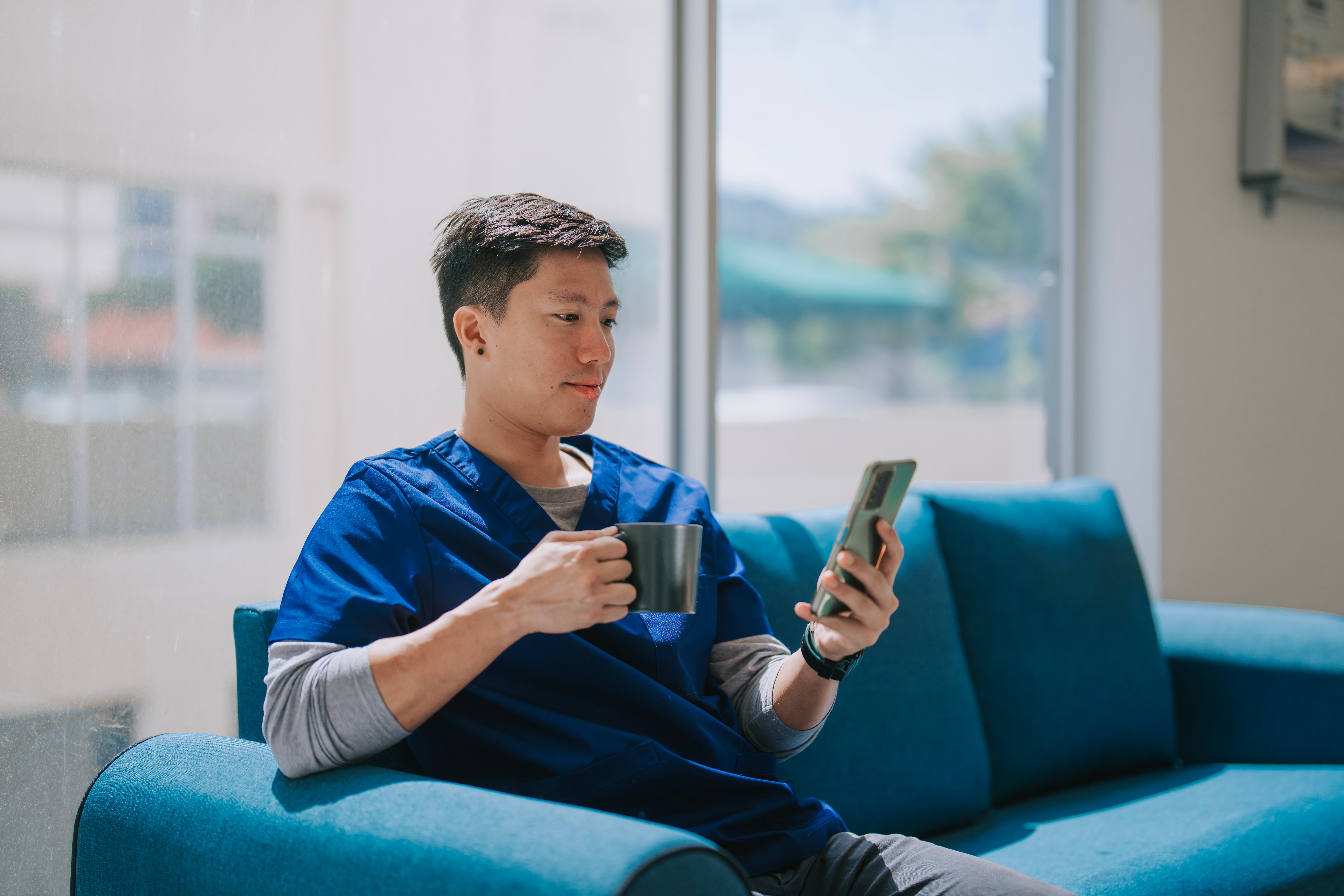
Tribunal concludes sharing clinical images with friends was professional misconduct
Sending graphic photos of patient injuries, even as a joke, can have serious consequences. In this case, a ‘rather juvenile’ attempt to impress led to termination of employment, loss of a training position, a protracted investigation and a fine.
Wednesday, 13 November 2024
Key messages from the case
Clinical images must always be treated with sensitivity and respect – even if they are not obviously identifiable. Doctors who find themselves tempted to share graphic images with friends to shock or impress may find themselves subject to significant professional penalties.
Details of the decision
Inappropriate use of clinical images
Dr K was a registrar working in orthopaedics at a major public hospital. On several occasions the doctor shared graphic photos, video and x-ray images of patients’ injuries with friends via text or WhatsApp. The images often had unprofessional comments attached.
In one case part of a patient’s name was visible in the image.
The images were discovered and a complaint was made to the regulator. A hospital investigation concluded that Dr K had taken the images and that the images had not been accessed from patient files, and the images had not been shared publicly on social media.
When the images were discovered, Dr K was suspended from their role and subsequently lost the opportunity of a training position. After being unemployed for six months, Dr K retrained as a general practitioner. At the time of the hearing they were working as a GP and part time in a fracture clinic.
The tribunal found that Dr K’s actions represented a substantial departure from the standards expected of a doctor with the same training and experience.
It commented that the conduct exhibited a ‘flippant disregard’ for the patients’ pain and suffering and sharing the images was inconsistent with a doctor’s obligations to practise with integrity and compassion. Dr K accepted the regulator’s position that this constituted professional misconduct.
Outcome
There was nearly five years between the offending actions and the tribunal hearing. At the hearing, the tribunal noted that Dr K had no other disciplinary history and Dr K’s conduct had been exemplary including having genuine insight into the inappropriateness of their conduct.
The tribunal accepted that Dr K had co-operated with the investigation and had not contributed to the delay in bringing the proceedings.
The tribunal concluded that while Dr K’s conduct was serious there were mitigating considerations including that:
- no patient records were accessed
- despite part of a patient’s name being visible, the patients were not identifiable
- the images were sent to individuals and not shared on social media or otherwise published
- there was no sexual or indecent intent, but rather juvenile efforts to impress during a period of personal and professional stress.
In the circumstances, the tribunal considered that it was not warranted to issue a reprimand which would remain on the doctor’s public record for a further 5 years. It was acknowledged that, had the matter been heard more promptly, a reprimand may have been appropriate. However, due to the time that had elapsed and Dr K’s conduct since, no protective purpose would now be served by imposing a reprimand. The tribunal also agreed to an order that Dr K’s name not be published.
However, given the seriousness of the conduct, a fine was appropriate as a deterrent.
Dr K was fined $5,000. Each party had to pay their own costs.
Key lessons
Only take clinical images where the image is necessary for patient care, or if for another reason such as research or education, make sure this is clear when obtaining patient consent.
When obtaining patient consent, explain how the image will be used, who will have access to it and how it will be stored. Where possible, take the image on hospital equipment (for example a hospital camera or hospital phone). Save the image to the patient’s file.
Always follow hospital or clinical guidelines in relation to taking clinical images.
Assume all images are identifiable, even if they appear de-identified and treat them as confidential.
Never share patient images on social media or with others without specific patient consent to do so.
Only access patient images for clinical purposes, and never access them without a valid clinical reason relevant to the particular patient.
Constant exposure to trauma can be desensitising. Take care to monitor your own wellbeing and watch for signs of burnout.
References and further reading
Avant factsheet: Clinical images – a snapshot of the issues
Avant article: Get smart: clinical images and smartphones
Avant flowchart: Taking a clinical image
Avant factsheet: Privacy: the essentials
AMA and MIIAA: Clinical images and the use of personal mobile devices: A guide for medical students and doctors
More information
For medico-legal advice, please contact us here, or call 1800 128 268, 24/7 in emergencies.
The case discussed in this publication is based on a real case. Certain information has been de-identified to preserve privacy and confidentiality. The information in this article does not constitute legal advice or other professional advice and should not be relied upon as such. It is intended only to provide a summary and general overview on matters of interest and it is not intended to be comprehensive. You should seek legal or other professional advice before acting or relying on any of its content.
More ways we can help you
Our collection on this topic
Explore more insights and resources about this topic, in different formats from Avant and external organisations.



